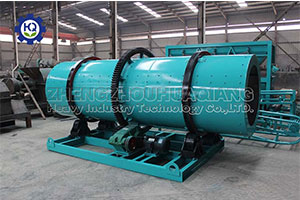
Rotary drum granulators, widely used in agriculture, have both positive and negative effects on the environment.
The positive effects
1. Less Pollution
These rotary drum granulators turn farm waste—like crop stalks, animal manure, and other organic leftovers—into usable fertilizer. This cuts down on harmful practices like burning or dumping waste, which release toxic gases, dirty water, and trash into the environment. Plus, using organic fertilizers improves soil health, boosts its natural cleanup power, and reduces reliance on chemical fertilizers. This helps tackle pollution from farm runoff.
2. Waste Recycling
By converting trash into fertilizer, rotary drum granulators recycle nutrients that would otherwise go to waste. This promotes the recycling of nutrients and reduces the dependence of agricultural production on chemical fertilizers. It helps to achieve the goal of sustainable agricultural development and promote the restoration of the agricultural ecological environment.
3. Energy Savings
Modern rotary drum granulators are built to save energy. Compared to older equipment, they use less electricity and cut down on heat needed for drying and cooling. Their efficient design makes fertilizer production greener and cheaper.

The negative effects
1. Dust Problems
Dust kicks up during loading, mixing, granulating, drying, and cooling. Without proper controls—like air filters or enclosed systems—this dust can pollute the air and even harm workers’ health.
2. Dirty Water
Cleaning the equipment or handling wet materials can create waste water. If dumped untreated, this water can carry pollutants like excess nutrients or chemicals into rivers and groundwater.
3. Noise pollution
Rotary drum granulators and their supporting equipment will generate noise during operation, which may affect the surrounding sound environment.
However, with the continuous development and improvement of technology, the environmental performance of rotary drum granulators is also gradually improving. As long as the rotary drum granulator is reasonably applied and scientifically managed, it can maximize its agricultural application value while minimizing the negative impact on the environment.